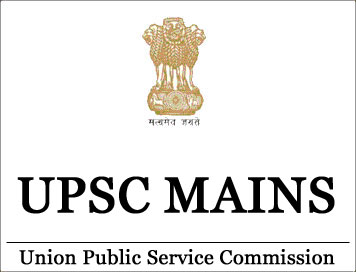Syllabus: (Paper-I: Essay)
Q. Sunrise industries: can this be the next big thing for India?
Structure of the Essay:
Introduction:
- The meaning of sunrise industry should be clarified with a lucid example.
- Do give an idea of what all is going to come in the body of the essay.
- Also clarify your stand to the question asked in the topic.
Body:
- Mention various sunrise industries in Indian context.
- Briefly explain in each case why it is apt to classify it as Sunrise industry.
- Discuss the futuristic importance of each one of them in the Indian context.
- Mention the possible threats to Indian economy due to the sunrise industries.
- If your stand is that it’s the next big thing, then do negate those threats.
- Mention the bottlenecks for these Sunrise industries.
Conclusion:
- Write down the measures that need to be taken by various actors viz. government, civil society, citizenry to fully reap the potential of sunrise industries.
Content of the Essay:
Definition of Sunrise industry:
Sunrise industry is a colloquial term for a burgeoning sector or business that is just in its infancy but shows promise of a rapid boom. It generally has plenty of “buzz” surrounding them as public awareness about the sector increases and investors get attracted to its long-term growth prospects. Examples include e-commerce, cloud computing etc.
Characteristics of Sunrise Industry:
1. High growth rates
2. Numerous start-ups
3. High degree of innovation
4. Abundance of venture capital funding.
Various Sunrise Industry in India
1. E-Commerce – e-commerce encompasses a range of economic activities such as retail, travel, tourism, food and beverages etc. It is going to be driven by growing Internet population, smartphones access and increased online shoppers.
2. IT Industry - Global technology spend will increase, not decrease in future, and this will create a lot more opportunities for the Indian IT industry. According to Nasscom, The Indian IT industry is likely to grow 7-9 per cent in next decade. There is going to be a net addition of nearly 1.5 lakh jobs to the industry every year.
3. Food processing Industry - In today’s world, time has become extremely precious, and a fast-paced world has got habituated, in fact, addicted, to a ready-made culture. Thus, growing youth population, which is also going to be more urban, is more likely to shift to Ready to Eat Food.
Further, The food processing industry connects the farmers with their consumers, adding value on the way.
According to reports, during 2009-13, India’s exports of processed food and related products increased at a compounded annual growth rate of 21.9% to $36.1 billion. Further, the Indian food industry is estimated to grow to about $200 billion by 2015.
Mega Food Parks have set a great precedent for public-private partnerships where the private sector invests in infrastructure, while the government brings in technology and knowledge to help farmers earn reasonably, without suffering losses.
4. Tourism – Diversity of culture, varied geographical and climatic conditions provides immense opportunity for tourism sector in India. Realising this, the government has also started schemes like Swadesh Darshan, which has prepared thematic tourism circuits like Ramayana circuit.
5. Cloud Computing - Cloud Computing and its increasing usage among Indian enterprises is expected to create over a million new jobs by 2022. Its annual growth is forecast at 17 per cent. It facilititates other sectors of the economy as well by permitting an increase in IT innovation, which, in turn, supports business innovation that leads to accelerated development schedules, faster project completion, shorter time to market for new products, and lower operational costs.
6. New and Renewable Energy – Under INDC, India has pledged to increase the share of non-fossil fuels to 40% in its energy mix by 2030. India has set an ambitious target of 175 GW of renewable energy by 2022.
Certain other newer source of energy like hyderogen fuel, biofuel are also witnessing high level of research and they can be the next big thing in fuel basket.
7. Electric Mobility – E-Rickshaw has already started replacing conventional rickshaw in most of the cities across India. Government of India targets to completely shift to electric vehicles by 2030 under FAME India Mission. This industry is also driven by increasing level of air pollution in various Indian cities.
Threats from Sunrise Industry:
1. Its rapid emergence may push into obsolescence a competing industry sector that is already in decline. E.g. e-commerce can make brick and mortar shops obsolete.
2. Structural Unemployment – Any sunrise industry shall require a new skill set and the people from competing industry may lose job as there would be a mismatch between the skills they posses and skills required in these new industries.
3. Life Style Changes could be detrimental –e.g. Processed food could be tastier but less nutritious. Smartphones and other IT revolutions may induce sedentry life style.
Bottlenecks for sunrise Industry:
1. Viability - The buzz they generate at the onset may be based largely on speculation for the possibilities the industry represents, rather than any tangible business activity. E.g. mobile industry remained unviable for a major part of second half of 20th century.
2. Short Life Cycyle – e.g. The compact-disc industry, which was a sunrise industry in 1990s, but it became sunset industry within a decade.
3. Failure to Meet global standard - e.g. lack of phytosanitary measures in Indian food processing industry.
4. Chalta Hai Culture of India – “Old habbits die hard”. Sunrise Industries will require new set of standards and skills.
5. Poor Quality of Higher Education – None of our universitities feature in global top 100 universities list. Around 80% of our engineering graduates are not employable. So, there is lack of skilled workforce to be employed in fast changing sunrise industry.
6. Lack of Digital Infrastructure – Most of the sunrise industries are related to digital infrastruture in one way or another. Internet Penetration in rural India is still as low as 20%.
7. Lack of Physical Infrastructure – It makes trade and logistics costly in India. E.g. logistics consists 25% of the cost of manufacturing firm in India while it is lesss than 15% in case of China.
8. Complicated Legal Structure – e.g. Flipkart was first forced to shift its headquarter to Singapore and then it was sold to a Walmart. Lack of autonomy in operating ecommerce business is being considered a prime reason for this exit.
Steps Needed:
1. By Government
- Infrastructure – Road, Rail, Ports are facilitator to any industry.
- Quality Education – We need world class universitites to avoid brain drain and also provide skilled workforce to sunrise industries in India.
- Ease of doing business – Although we have improved 30 points n World Banks ease of doing business ranking in 2017, we still perform very poorly in many areas like contract enforcement.
2. By Corporates
- Skill Training to Youths – Indian IT industry measures like Infosys and TCS has adopted inhouse training model to create the skilled workforce needed for IT industry. Other Sunrise industries needs to do the same.
- Venture Capital Investment – Venture capitalists needs to support entrepreneurs in these sunrise industries
- R&D – Companies in India need to invest more in R&D because most of the sunrise industries are based on latest tools and technologies.
3. Citizenry
- We need to be progressive towards latest scinetific developments.
- We need to ward off “chalta hai” culture
- Human Resource Development should be a priority in every household.























